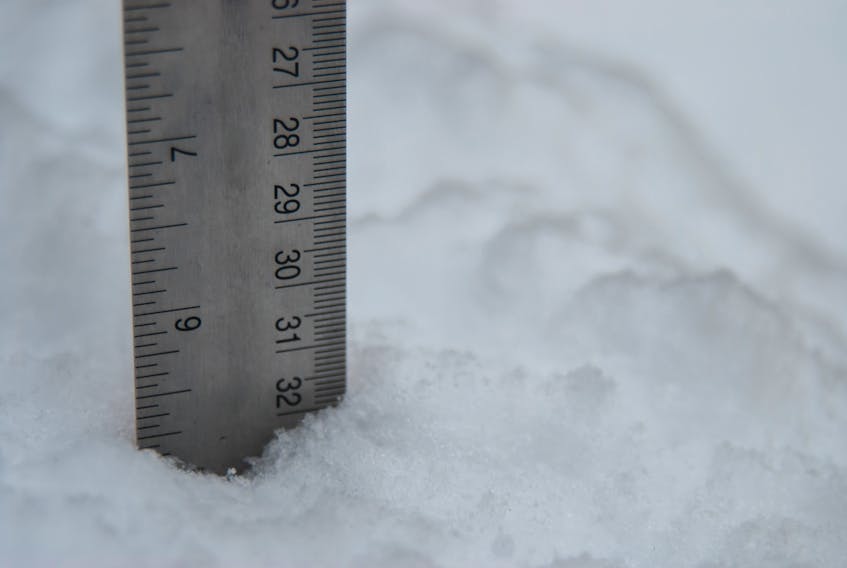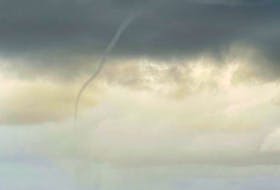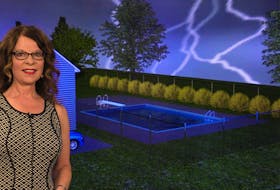Winter storms come in all shapes and sizes and, as we’ve just witnessed, with many types of precipitation.
The colder side of the weekend Nor’easter dumped as much as 60 cm of snow over New Brunswick’s Acadian Peninsula, while Trafalgar, N.S., reported 114 mm of rain. Between those two extremes, we were treated to several hours of ice pellets and freezing rain.
Personally, I prefer snow in the winter, but not everyone does. A co-worker popped his head into my office Monday morning and said, “Wow, imagine the shoveling had it been a few degrees colder.”
Lynda Reid White's yard in Joggins, N.S., during and after the Jan. 20 Nor'easter. Heavy rain followed the snow during that storm and Reid says they were fortunate this time around. - Contributed
Yes, imagine.
People often ask me what the ratio is. The accepted average ratio is 10 to 1. This baseline conversion applies for snow falling at temperatures near freezing, between – 3 and 2 C.
That means one cm of rain would be 10 cm of snow. Because rain is a liquid, it gets measured in millimetres and, since there are 10 millimetres in a centimetre, that means 10 mm of rain would give you 10 cm of snow.
We’re not there yet. In some parts of Atlantic Canada, the moisture content is high, and the snow is denser so it’s closer to 5:1. So, 10 mm of rain is equal to about five cm of snow here.
For those who measured close to 70 mm of rain on Sunday, at the coast where the water content of the snow would have been high, we could have been dealing with 35 cm of snow. That’s a lot of shoveling.
By the way, other factors can affect snow density apart from air temperature. Wind, for example, can compact snow and cause it to fall more densely, lowering the rain-to-snow ratio.
- Read more Weather University columns.
- Have a weather question, photo or drawing to share with Cindy Day? Email [email protected]
Cindy Day is the chief meteorologist for SaltWire Network.
RELATED









